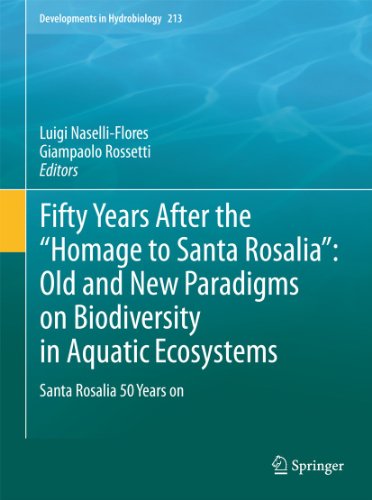Synopsis
produce well-documented food web patterns, instead of statistically inferring likely mechanisms from In an attempt to explain 'Why are there so many kinds these patterns. The ADBM is a model which c- of animals?' Hutchinson (1959) listed and discussed, bines the constraints imposed by body size on many in his productive and fertile paper, several ideas biological variables (allometric of foraging variables) related to diversity of animals or the lack of it, with optimal foraging theory in order to predict including suggestions on possible mechanistic exp- structural properties of consumer-resource food webs nations. Later (Hutchinson, 1961) stated them explic- (Petchey et al., 2008; Beckerman et al., 2006). This itly for the plankton community, and another authors model, which according to these authors has been (i. e. Scheffer et al., 2003), following his trail until the proved successful for plankton communities, allows present time, have used plankton as a model for the us to determine the speci?c resource-consumer links understanding of ecological diversity, and demon- and then evaluate the diet breadth for each consumer. strated that Hutchinson's ideas are still useful Therefore, it enables to test how much diets overlap nowadays. Among other suggestions, Hutchinson and hence to quantify the implication of the afo- highlighted the food web context to suggest that mentioned biological mechanism in structuring diversity of primary producers should allow ma- plankton communities in the ?eld.
Présentation de l'éditeur
This book celebrates the fiftieth anniversary of publication of one of the landmarks of the modern ecological thought: the "Homage to Santa Rosalia or why are there so many kinds of animals" by George Evelyn Hutchinson. Published in 1959 in the journal "The American Naturalist" this article has been the engine which have moved most of the ecological research on biodiversity in the last half a century. Hutchinson starts his article by telling the legend of Santa Rosalia, a hermit who died in the second half of the XIII century and who spent the last years of her life in a cave nearby a pond. In this pond Hutchinson collected two species of aquatic insects and took the inspiration to explore the reasons why life is present on our Planet in such amazing variety of forms. This article thus inaugurated the season of research on biodiversity. Researchers and students in the field of ecology are the readers to whom this book is mainly addressed but also those involved in the history of Science will find in this book useful information. Issued in 2010, which has been declared "international Year of Biodiversity" by the United Nations, this book is also a tribute to the biological diversity allowing, enriching and sustaining human life.
Les informations fournies dans la section « A propos du livre » peuvent faire référence à une autre édition de ce titre.
